 Without Limits: A Shared Vision for the Future of Career Technical Education (CTE Without Limits) calls on leaders to ensure that each learner feels welcome in, is supported by and has the means to succeed in the career preparation ecosystem. One avenue Advance CTE is utilizing to realize this vision is the New Skills ready network, a JPMorgan Chase & Co. funded initiative which draws on cross-sector partnerships in six cities composed of state, regional and local partners. Building flexible and responsive career pathways systems at each level requires leaders to provide meaningful and ongoing mechanisms for elevating learner voice, and the voices of learners’ families and communities, to share their unique experiences and have direct and ongoing input into the design and delivery of career pathways.
Without Limits: A Shared Vision for the Future of Career Technical Education (CTE Without Limits) calls on leaders to ensure that each learner feels welcome in, is supported by and has the means to succeed in the career preparation ecosystem. One avenue Advance CTE is utilizing to realize this vision is the New Skills ready network, a JPMorgan Chase & Co. funded initiative which draws on cross-sector partnerships in six cities composed of state, regional and local partners. Building flexible and responsive career pathways systems at each level requires leaders to provide meaningful and ongoing mechanisms for elevating learner voice, and the voices of learners’ families and communities, to share their unique experiences and have direct and ongoing input into the design and delivery of career pathways.
As state leaders continue to assess and adjust program throughout the career pathways continuum, including CTE, steps should be taken too identify the full scope of institutional barriers in policies and programs, develop learner-centric programs and interventions and build trust with marginalized learners and communities to ensure their voices and perspectives are brought to the forefront of decisions.
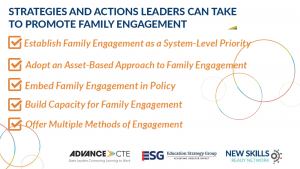 In support of this effort, Advance CTE’s new brief, Elevating Family Voice in Career Pathways, includes five strategies as well as actions, tools and resources leaders can leverage to effectively and meaningfully engage families in every stage of career pathways development.
In support of this effort, Advance CTE’s new brief, Elevating Family Voice in Career Pathways, includes five strategies as well as actions, tools and resources leaders can leverage to effectively and meaningfully engage families in every stage of career pathways development.
This resource details the challenges and opportunities associated with family engagement and provides promising approaches to comprehensive family engagement practices. Some examples of promising approaches and strategies that are meaningfully engaging families include:
- A New York school district is adopting an asset-based approach to family engagement by mitigating the challenges faced by families that hinder their engagement with the school system. The Sherburne-Earlville Central School District implemented initiatives aimed at collectively responding to the economic deprivation experienced by families the district served. The superintendent collected information from parents and families to understand their challenges and provided financial resources to ease their financial burdens. The district built trusting relationships with families and leveraged their engagement to inform the development of programs available to learners. As states remedy the barriers to meaningful engagement with families, leveraging similar practices to ensure families of all backgrounds have the access and opportunities to engage with leadership to elevate their voices, experiences and expertise of supporting their learners can be successful.
- School districts in Indiana and Washington are establishing family engagement as a system-level priority by integrating family engagement as commitments in their equity agendas. Indianapolis Public Schools and Highline Public Schools have equity policies that guide the strategic direction for the districts’ efforts to reduce and dismantle inequities. The policies signal a district-wide commitment to equity, including recognizing the value and importance of family engagement to learner success. Both districts leverage family advisory groups and other engagement series that provide meaningful feedback to district leadership. As state leaders prioritize family engagement, embedding the priority in policy will ensure the practices continue regardless of shifts in personnel. States can ensure family engagement remains a priority throughout systems and achieve engagement goals with families with clear and actionable priorities that signal to the community their commitment to elevating family inclusion.
- The Denver, Colorado, New Skills ready network site lead organization, The Attainment Network, is building capacity for family engagement. The intermediary organization supports Colorado’s career pathway ecosystem in meaningful community and family engagement by developing comprehensive learner and family engagement strategies including a community of practice to help identify barriers to success and inform decisions around policies and programs. With strategic collaboration, states can leverage their partners to embed family engagement in every stage of career pathway development to ensure equity and provide meaningful and ongoing mechanisms to elevate family, learner and community input.
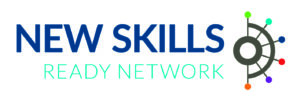 Read about more promising examples and five implementation strategies in Elevating Family Voice in Career Pathways For more resources on developing high-quality career pathways, please visit the New Skills ready network series page in the Learning that Works Resource Center .
Read about more promising examples and five implementation strategies in Elevating Family Voice in Career Pathways For more resources on developing high-quality career pathways, please visit the New Skills ready network series page in the Learning that Works Resource Center .
Haley Wing, Senior Policy Associate


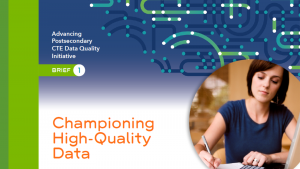 In the coming months, Advance CTE will release a series of four briefs to share strategies put in place by the PDI states to advance postsecondary CTE data quality and use. The first brief explores how postsecondary CTE data can be used in support of state education and workforce goals, and features
In the coming months, Advance CTE will release a series of four briefs to share strategies put in place by the PDI states to advance postsecondary CTE data quality and use. The first brief explores how postsecondary CTE data can be used in support of state education and workforce goals, and features 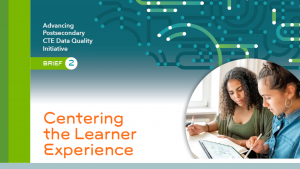 The second brief advances a theory of change for centering learners in postsecondary CTE data collection and use, featuring the
The second brief advances a theory of change for centering learners in postsecondary CTE data collection and use, featuring the 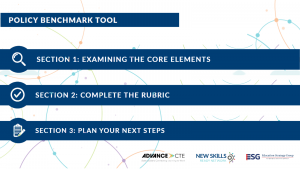 Effective use of the PBT requires intentional collaboration and planning. It is composed of three sections to enable users to: understand the core elements of strong CPL policy and practice, assess where their own policy and practice is strong and where opportunities remain, and create an action plan to improve the effective use of CPL in learners’ career pathways.
Effective use of the PBT requires intentional collaboration and planning. It is composed of three sections to enable users to: understand the core elements of strong CPL policy and practice, assess where their own policy and practice is strong and where opportunities remain, and create an action plan to improve the effective use of CPL in learners’ career pathways.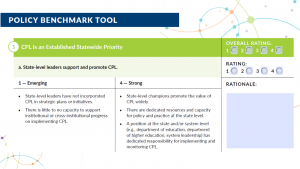
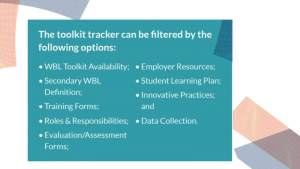
 Without Limits: A Shared Vision for the Future of Career Technical Education
Without Limits: A Shared Vision for the Future of Career Technical Education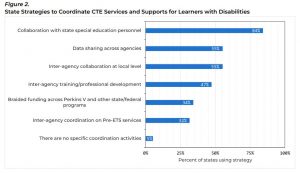
 State education agencies, legislators and educators faced significant challenges from
State education agencies, legislators and educators faced significant challenges from 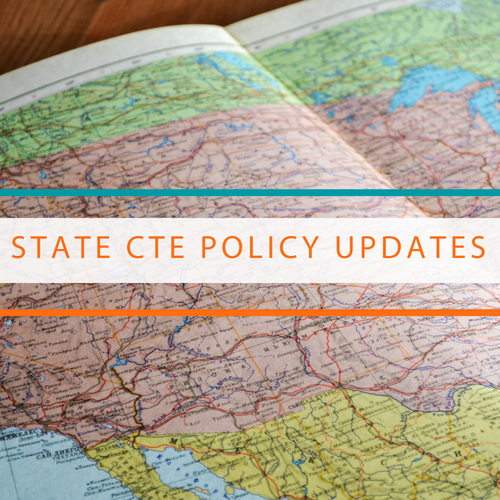 State education agencies, legislators and educators faced significant challenges from
State education agencies, legislators and educators faced significant challenges from 